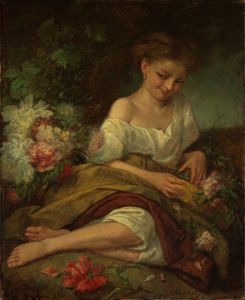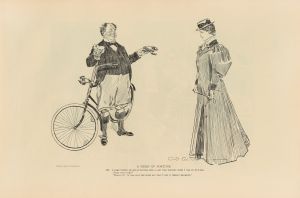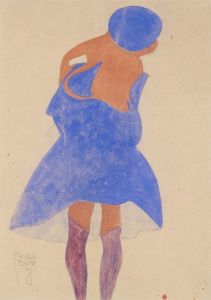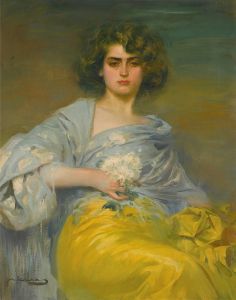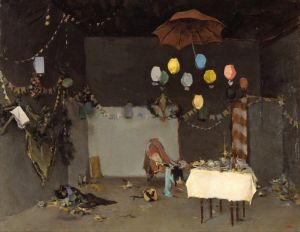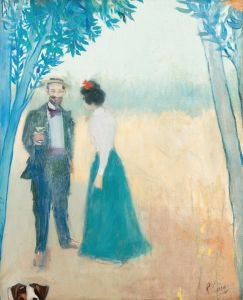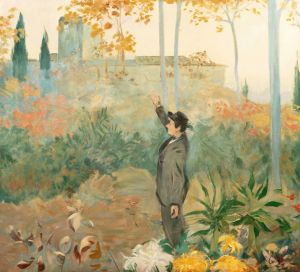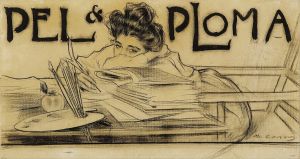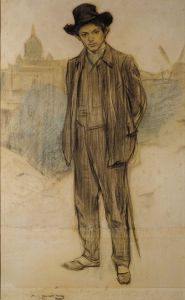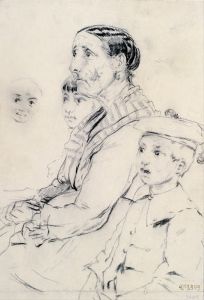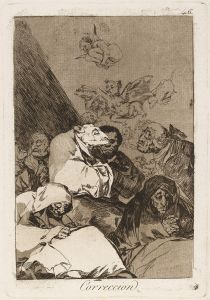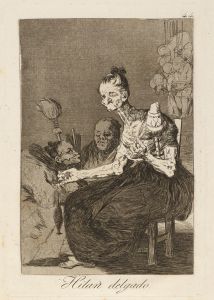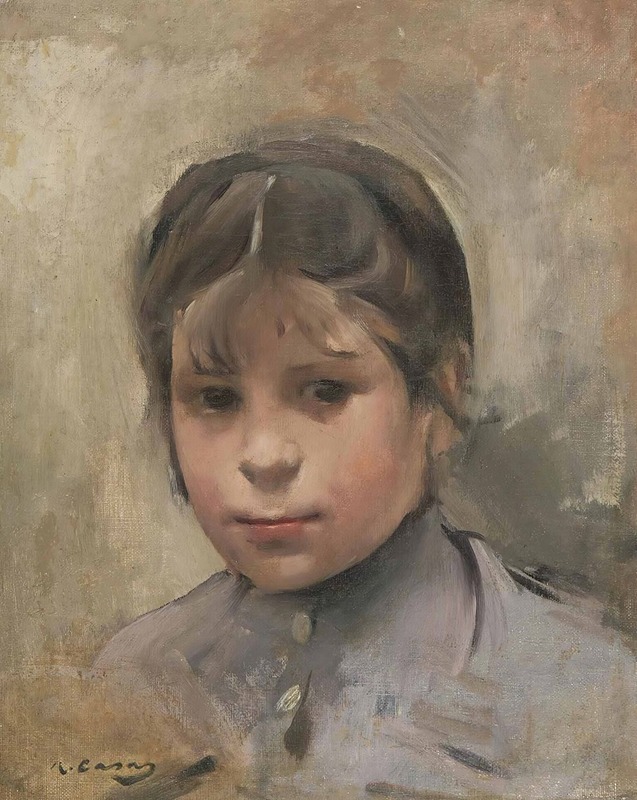
Niña
A hand-painted replica of Ramón Casas’s masterpiece Niña, meticulously crafted by professional artists to capture the true essence of the original. Each piece is created with museum-quality canvas and rare mineral pigments, carefully painted by experienced artists with delicate brushstrokes and rich, layered colors to perfectly recreate the texture of the original artwork. Unlike machine-printed reproductions, this hand-painted version brings the painting to life, infused with the artist’s emotions and skill in every stroke. Whether for personal collection or home decoration, it instantly elevates the artistic atmosphere of any space.
Ramón Casas i Carbó (1866–1932) was a prominent Spanish painter known for his significant contributions to the Catalan Modernisme movement. His works often depicted the social, cultural, and political life of Barcelona and Paris during the late 19th and early 20th centuries. One of his notable paintings is "Niña," which exemplifies his skill in portraiture and his ability to capture the essence of his subjects with subtlety and depth.
"Niña" is a portrait that showcases Casas's mastery in rendering human expressions and his keen eye for detail. Although specific details about the painting's creation, such as the exact year it was painted, are not widely documented, it is consistent with Casas's style during his mature period, where he focused on capturing the character and mood of his subjects with a refined and delicate touch.
Casas was known for his ability to convey the personality and inner world of his subjects through his portraits. In "Niña," this is evident in the way he uses light and shadow to highlight the features of the young girl depicted in the painting. The use of soft, muted colors and the gentle brushwork contribute to the serene and contemplative atmosphere of the piece. Casas's attention to detail is apparent in the careful rendering of the girl's expression, which suggests a sense of innocence and introspection.
The composition of "Niña" reflects Casas's interest in capturing candid, intimate moments. The girl is portrayed in a simple, unadorned setting, which allows the viewer to focus entirely on her expression and demeanor. This approach is characteristic of Casas's portraiture, where the background is often understated to emphasize the subject's presence and personality.
Casas's work, including "Niña," is often associated with the broader context of the Modernisme movement, which sought to break away from traditional artistic conventions and embrace new forms of expression. His portraits, in particular, are noted for their psychological depth and their ability to convey the complexities of human emotion. "Niña" is a testament to Casas's skill in this regard, as it captures a moment of quiet reflection and subtle emotion.
Throughout his career, Ramón Casas was celebrated for his contributions to both painting and poster art. His works were exhibited widely, and he played a significant role in the cultural life of Barcelona, particularly through his involvement with the Els Quatre Gats café, a gathering place for artists and intellectuals. Casas's legacy as a leading figure in Catalan art is well-established, and his portraits continue to be admired for their elegance and insight.
In summary, "Niña" by Ramón Casas is a fine example of the artist's ability to capture the essence of his subjects with sensitivity and precision. The painting reflects Casas's commitment to portraying the human experience with authenticity and depth, making it a valuable piece within his body of work and a significant contribution to the art of portraiture.






